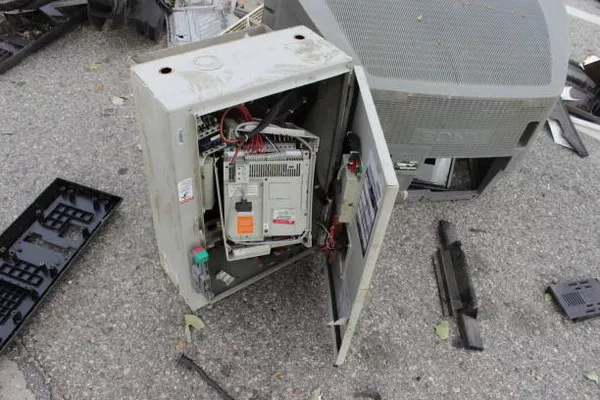In today’s world, reliable power is essential, whether for everyday use, emergency situations, or recreational activities. A 9500 watt generator is a robust option that can supply enough energy for various applications. This article explores what a 9500 watt generator can run, how to calculate power requirements, and practical tips for maximizing its use.
Understanding Generator Wattage
What is Wattage?
Wattage measures the power output of a generator. It indicates how much electrical power the generator can provide at any given moment. Understanding wattage is crucial for determining what devices can be powered simultaneously.
Starting vs. Running Wattage
Generators have two wattage ratings: starting (or surge) wattage and running wattage.
Starting Wattage: This is the extra power required to start appliances with motors, such as refrigerators or air conditioners. It typically peaks for a few seconds before stabilizing.
Running Wattage: This is the continuous power required to keep the appliance running after it starts.
A 9500 watt generator often provides around 9500 watts of starting power and approximately 7500 to 8500 watts of continuous running power, depending on the model.
What Can a 9500 Watt Generator Run?
Household Appliances
A 9500 watt generator can power a range of household appliances, making it suitable for emergency backup during power outages or for use in remote locations.
Kitchen Appliances
Refrigerator: A standard refrigerator usually requires about 600 to 800 watts to run, with an initial surge of 1200 to 1600 watts when starting.
Microwave: Microwaves typically use 600 to 1200 watts, depending on their power rating.
Coffee Maker: A coffee maker usually consumes about 800 to 1200 watts.
Heating and Cooling
Window Air Conditioner: A window AC unit may require between 1000 and 4000 watts depending on its BTU rating and size.
Space Heater: Most space heaters consume around 1500 watts.
Electric Furnace: Electric furnaces can use up to 5000 watts, making them a significant power draw.
Other Household Items
Television: A standard LED TV consumes about 100 to 400 watts.
Lighting: LED lights are energy-efficient and typically use about 10 to 15 watts per bulb.
Power Tools
A 9500 watt generator is ideal for powering various power tools, whether for home improvement or professional use.
Circular Saw: Generally requires around 1200 to 1500 watts.
Drill: Most drills consume about 300 to 600 watts.
Air Compressor: Small air compressors use 1200 to 1500 watts, while larger ones can draw more.
Recreational Equipment
For outdoor enthusiasts, a 9500 watt generator can power recreational equipment such as:
RV Air Conditioning: Running an RV air conditioner may require 2000 to 4000 watts, depending on the size.
Campers: Powering lights and small appliances in a camper or trailer is easily achievable with this generator.
Outdoor Events: If hosting an outdoor gathering, a 9500 watt generator can handle lights, sound systems, and food preparation equipment.
Backup Power for Home Systems
A 9500 watt generator can provide essential backup power for home systems during outages:
Sump Pump: A sump pump typically needs 600 to 1000 watts to operate.
Well Pump: Depending on the horsepower, well pumps can require anywhere from 600 to 2000 watts.
Calculating Your Power Needs
Understanding Wattage Requirements
To determine what your generator can run, you must first calculate the wattage needs of your devices.
List Your Appliances: Make a list of appliances you plan to power.
Check Power Ratings: Look at the labels or user manuals for starting and running wattages.
Total the Wattages: Add up the running wattages. Include starting wattages for items that may be running simultaneously.
Example Calculation
Suppose you want to power the following:
Refrigerator: 800 watts (1200 starting)
Microwave: 1000 watts
Lights: 200 watts
TV: 200 watts
Coffee Maker: 1000 watts
Total Running Wattage: 800 + 1000 + 200 + 200 + 1000 = 3200 watts
Total Starting Wattage: 1200 (Refrigerator) + 1000 (Microwave) + 1000 (Coffee Maker) = 3200 watts
In this scenario, a 9500 watt generator can handle the total running wattage, as long as only one high-draw appliance is starting at a time.
Practical Tips for Using a 9500 Watt Generator
Safety Precautions
Read the Manual: Always familiarize yourself with the generator’s user manual before use.
Use in Well-Ventilated Areas: Generators produce carbon monoxide; operate them outdoors and away from windows and vents.
Avoid Overloading: Stick to the generator’s wattage limits to prevent damage.
Efficient Use
Prioritize Appliances: Identify essential appliances and run them first. Prioritize based on need.
Use Energy-Efficient Devices: When possible, use LED lights and energy-efficient appliances to conserve wattage.
Maintenance
Regular Checks: Perform regular maintenance as per the manufacturer’s guidelines.
Keep Fuel Supply: Ensure you have an adequate fuel supply, especially during emergencies.
Conclusion
A 9500 watt generator is a versatile tool for home backup, outdoor activities, and construction projects. Understanding your power needs and the generator’s capabilities will help you maximize its use. With proper planning, you can ensure that you have the power necessary to keep your essential devices running, whether at home or on the go.
By knowing what a 9500 watt generator can run, you can make informed decisions that enhance your comfort and safety during power outages or while enjoying outdoor activities.
Related topics:

